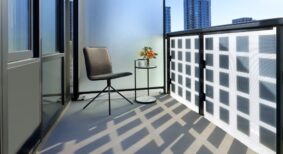Atlantic Canada stands out with markedly lower construction costs than points westerly in Altus Group’s recently released estimates of average per-square-foot price ranges for various housing formats in nine major Canadian markets. Costs are generally highest in Vancouver across all multifamily categories, including low-, mid- and high-rise concrete buildings and low-rise wood-frame apartments up to six storeys.
The producers of the 2024 cost guide note that some of the inflationary pressures seen in 2021 and 2022 have now eased, while other escalators remain. Falling costs for commodities and shipping containers are flowing through to construction materials and supplies, but surging demand for housing and an uptick in infrastructure projects creates competition for both materials and labour.
“Consequently, the overall outcome has been characterized by low to moderate cost escalation rather than substantial cost reductions,” the introduction to the cost guide states.
“It appears that the scales are tilting toward moderation of construction costs over the next 6 to 12 months, however, this equilibrium may be relatively short-lived as rapid population growth and a large backlog of projects will inevitably spur more development activity in key Canadian cities,” adds Colin Doran, Altus Group’s head of development advisory in the Americas.
Data for residential cost estimates has been gleaned from 2,550 projects across the multifamily, single-family and seniors’ housing sectors. For multifamily, that covers five different height categories of concrete buildings and low-rise wood-frame apartments, and also includes an estimate of the cost premium for higher-quality design and finishes beyond typical mid-market offerings. Only three markets — Vancouver, the Greater Toronto Area (GTA) and Ottawa-Gatineau — garner cost estimates for towers taller than 60 storeys, whereas there are few projects taller than 12 storeys in Atlantic Canada.
The cited average costs apply only for the scope of construction for the above-grade functions of the building, with additional calculations needed for below-grade parking facilities. Market-to-market variations for the same asset type are attributed to differing standards and specifications, as well as labour and material costs.
“The specification of a mid-quality condominium in Vancouver will typically be a higher specification than what is provided for a mid-quality condominium in Halifax. In addition, there are climate and code variations between cities. For instance, the HVAC system required in Calgary will be different than the HVAC system required in Vancouver,” the cost guide states.
Costs generally rise with building heights, with some of the widest differentials seen in the GTA. There, hard costs for concrete low-to-midrise buildings up to 12 storeys range from $285 to $390 per square foot (psf) versus $340 to $425 psf for 40- to 60-storey apartment towers. Costs are more even in Calgary, at $280 to $335 psf for low-to-midrise concrete apartments up to 12 storeys and $295 to $345 psf for towers of 40 to 60 storeys.
Both types of structures are priciest to build in Vancouver — at $325 to $400 psf for the shorter and $360 to $450 psf for the taller. At the other end of the scale, Halifax offers up the lowest costs for concrete structures up to 12 storeys, at $185 to $265 psf, while costs for similar-sized buildings are pegged at $195 to $280 psf in St. John’s.
Construction costs for low-rise wood-frame apartment buildings are the lowest in Halifax, at $165 to $200 psf, followed by St. Johns, at $170 to $250 psf. They are priciest in Vancouver at $250 to $350 psf, while topping out at $330 psf in Calgary, Edmonton, Winnipeg and the GTA. Wood-frame is cheaper than those markets to the west in Ottawa ($220 to $285 psf) and Montreal ($200 to $265 psf).





